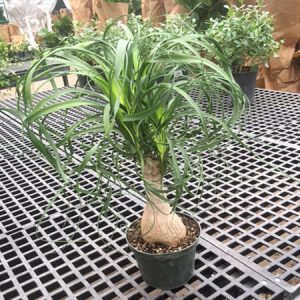Description
Ramonda –
There are 3 species of rosette forming evergreen perennials, in this genus. They occur in shady rock crevices and cliff faces in Northeastern Spain, the Pyrenees, and the Balkan Mountains. They are grown for their hairy, crinkled leaves, of variable shape and color, and their flat or shallowly cup shaped, colorful flowers. The flowers are often slightly 2 lipped, with 4 or 5, rarely 6 petals, and are born singly or in cymes like panicles on slender, leafless stems, in late spring and early summer. Grow Ramonda in a rock garden, in crevices in a stone wall, or alpine house.
In an alpine house, grow in equal parts loam, leaf mold and grit, in bright filtered light with shade from hot sun. Outdoors, grow in moist but well drained, humus rich, moderately fertile soil in partial shade. Plants are best grown on their sides to avoid accumulation of moisture in the rosettes, which may cause rotting in winter. Leaves wither in dry conditions, but recover if watered throughly.
Very susceptible to slugs and snail.
R. sebica – This rosette forming, evergreen perennial from Croatia, Yugoslavia, Albania, Western Greece and Northwestern Bulgaria grows 4″ tall and 6″ wide. It produces narrowly obovate, hairy, crinkled, irregularly scalloped, pale green leaves, to 2″ long. In late spring and early summer, it bears outward facing, saucer to cup shaped, lilac blue flowers, to 1 ½” across, each with 5, sometimes 6 petals, and violet-blue anthers, held singly or in pairs in cyme like panicles.
Zones 6-7





